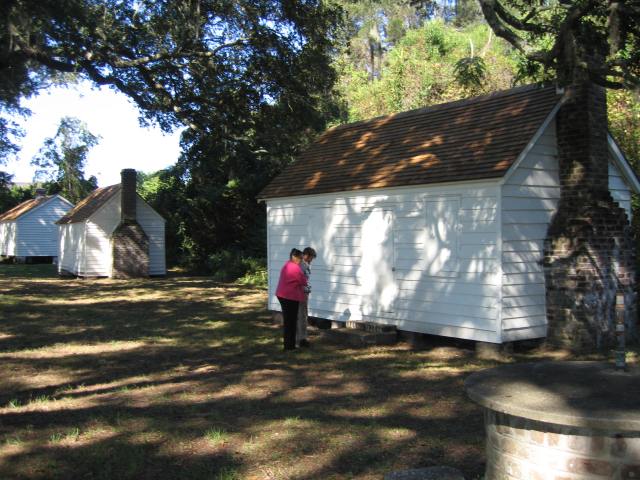
Touring McLeod Plantation with County Parks and Smithsonian staff, James Island, South Carolina, October 2012, image by Mary Battle.
In October 2012, I had the honor of touring McLeod Plantation on James Island with staff from Charleston County Parks and Recreation (CCPRC), and staff from the Smithsonian Institution’s National Museum of African American History and Culture (NMAAHC). CCPRC just purchased McLeod in 2011 from the Historic Charleston Foundation, and the site is not yet open to the public, so it was a privilege to experience such an extensive tour of the site as a representative from the Lowcountry Digital Library at the College of Charleston.
The Smithsonian staff on the tour included curators and museum professionals I read about in my public history research, such as Rex Ellis and Deborah Mack, so I was particularly excited to tag along and listen to their discussions and observations. They were there as part of a research investigation to assess African American history and culture resources throughout the United States. At McLeod, they were particularly interested in the site’s buildings and collections, not only for interpreting the site as a former plantation worked through enslaved African American skill and labor, but also as the location of Union troop occupation during the Civil War, and as the site of the local Freedman’s Bureau during Reconstruction. In addition, as CCPRC stewardship manager Mark Madden noted, many black and white individuals in the Charleston area have family connections to this site, so it is a prime focal point for diverse oral history research.
In an earlier blog post, “Starting from Scratch” (June 26, 2012), I touched on some of the advantages of interpreting a plantation landscape in the twenty-first century that has not been influenced by twentieth century tourism representation strategies. While many plantation tourist sites in Charleston today are seeking to implement more effective interpretations of African American history during and after slavery, they often struggle with unraveling the influence of white elite nostalgia on the site, particularly romantic marketing strategies designed to appeal to twentieth century visitors who came “looking for Tara” or “moonlight and magnolias.” Like the College of Charleston’s Dixie Plantation, McLeod Plantation has not previously been open to the public, so site interpreters can begin with raw materials, rather than extracting history from a problematic nostalgic tourism framework. This is particularly exciting for McLeod, which contains extensive historic materials and physical structures, as well as landscape features, that could be invaluable for constructing a more inclusive understanding of the Lowcountry’s plantation history.
The team assembled for the October tour suggest some of the various types of collaborative institutional resources that could lead to this plantation becoming an insightful, inclusive, and innovative public history site. Though interpretation of McLeod is very much in the early planning stages, and Madden was careful to inform me that nothing is set in stone, based on my own observations that day I see great potential for locally-based physical site interpretation, national preservation resources and promotion, and digital interpretation developed in partnership with the Lowcountry Digital Library and projects like APLA. Will keep you posted on what happens, but it was definitely a powerful look into the potential future of Charleston’s public history landscape!